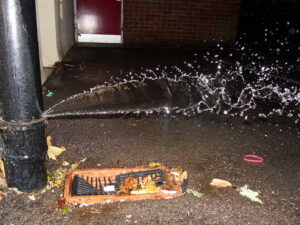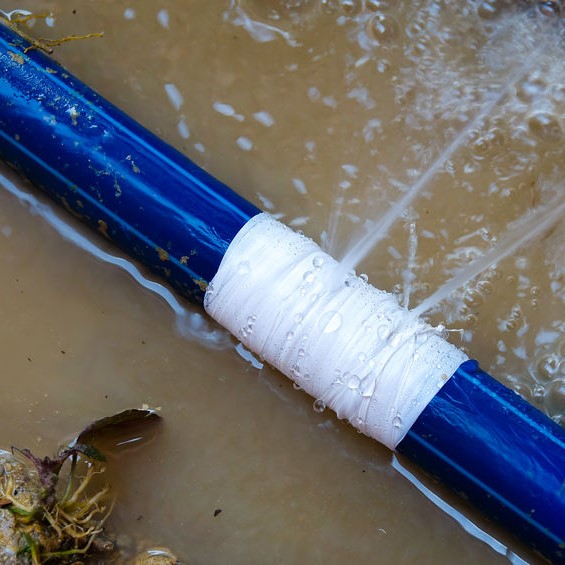Quick-Response Plumbing: Tips for Identifying as well as Fixing Ruptured Pipes
Quick-Response Plumbing: Tips for Identifying as well as Fixing Ruptured Pipes
Blog Article
How do you actually feel with regards to How to Install and Connect a New Dishwasher?

A ruptured pipe is a significant emergency; you can only stand as you view water you pay a lot to reunite with the earth. In worse cases, you discover a swimming pool on your kitchen floor, which is a terrific trip hazard, especially if you have children around. If the pipeline that burst remained in your walls, bad news: you might require to repaint that entire section.
Just how can a calamity like a burst pipeline be protected against and taken care of? Well, by listening to your expert emergency plumbing professionals and also adhering to these rules.
How do I recognize when my pipelines have burst?
Fluctuating water pressures
Pipes do not just burst in a day. You may have discovered that your kitchen area faucet or shower does not run immediately when you turn the faucet. It may stop briefly for a couple of secs and then blast you with even more pressure than common.
In various other instances, the water may seem normal initially, after that decrease in stress after a couple of secs.
Damp wall surfaces as well as water spots
Prior to a pipeline ruptureds, it will certainly leakage, the majority of times. If this relentless leaking goes unnoticed, the leak may graduate into a large laceration in your pipeline. One simple method to prevent this emergency is to watch out for damp wall surfaces ad water spots. These water spots will lead you right to the leak.
Puddles under pipes and also sinks
When a pipeline ruptureds, the outflow develops a puddle. It may appear that the puddle is growing in size, and also despite the amount of times you wipe the puddle, in a few minutes, there's an additional one waiting to be cleansed. Usually, you might not have the ability to map the puddle to any visible pipelines. This is an indication to call a professional plumber.
Untraceable trickling sounds
Pipeline bursts can happen in the most undesirable areas, like within concrete, inside wall surfaces, or under sinks. When your home goes silent, you may have the ability to listen to an irritatingly relentless trickling noise. Even after you have actually examined your shower head and also kitchen area tap, the dripping might proceed.
Precious reader, the trickling may be coming from a pipeline inside your wall surfaces. There isn't much you can do regarding that, except inform a professional plumber.
Turn off the Water
When water freezes, it increases in volume by about 9 percent. And also it broadens with remarkable force: The stress inside pipes may go from 40 extra pounds per square inch to 40,000 psi! No pipe can hold that much stress, so it breaks open. The break might occur where the ice kinds, however more often, it occurs where water stress discovers a weak spot in the pipe. That may be inches or perhaps feet from the frozen area. Discover the water shutoff valve and switch off the water to avoid even more damages. You might additionally need to shut down the electrical energy also, depending upon where the leaks takes place as well as just how huge it is.
Contaminated water
Many individuals assume a ruptured pipe is a one-way electrical outlet. Rather the contrary. As water spurts of the hole or laceration in your plumbing system, contaminants find their method.
Your water may be polluted from the source, so if you can, inspect if your water tank has any type of problems. Nevertheless, if your drinking water is supplied and also cleansed by the local government, you need to call your plumber right away if you see or scent anything funny in your water.
What do I do when I detect a burst pipeline?
Your water meter will continue to run also while your water wastes. To minimize your losses, discover the main controls as well as transform the supply off. The water mains are an above-ground framework at the edge of your building.
How to Fix & Detect a Leaking Pipe
How Do I Know if a Pipe is Leaking?
Leak detection tests can help you determine if your pipe has a leak. Even if you don’t see an apparent leak, you should still conduct leak detection tests regularly to save water and money—and prevent major damage to your home.
Water meter. It can be helpful to figure out what your usual water meter usage numbers are and then monitor them regularly. To monitor your meter, first, turn off all water faucets in your home. Check the meter and write down the numbers. In a few hours, check the meter again. If the numbers have changed, you have a leak. Water gauge. Use a water gauge to test your water pressure. Your showerhead should produce a certain amount of water pressure based on its model and design. If the pressure is lower than it is supposed to be for that specific showerhead, your home likely has a leak. Puddles. Look inside your bathroom, laundry, and kitchen sink cabinets. Puddles around the cabinets or around toilets, tubs, showers, and washing machines indicate the presence of a leaking pipe. You may also notice loose tiles, peeling or flaking paint, or mold caused by water accumulation. Napkin test. Even if you don’t see any puddles, you may still have a leak. You can test for water leaks in the bathroom, laundry, and kitchen by wiping below-sink connections with a napkin, paper towel, or piece of toilet paper. If it becomes damp, you probably have a leaking pipe under the sink. Discolored walls. Walls that are discolored—usually with brown or yellow stains—or bulging might mean that they have been impacted by water damage caused by a leaking pipe. Smell. A leaky pipe will create sitting water, and over time, that water may develop a musty smell. If your home smells musty, but you can’t locate the source, it may be due to a leak. Steps for Fixing a Leaking Pipe
A leaky drain can be remedied by tightening the pipe base, replacing the drain seal, caulking the rim, and tightening the pipe nut. Similarly, a leaking toilet pipe can be treated by tightening the packing nut. You may also need to replace the valve. A leaky faucet may just need tightening or replacement of the washers. If that doesn’t work, consider replacing your faucet. If your pipe has a hole in it, you may want to use a pipe leak sealer or pipe leak tape. This quick fix for water pipe leaks can also temporarily fix a copper pipe leak. https://www.ahs.com/home-matters/quick-tips/how-to-tell-if-pipes-are-leaking/

I recently found that blog entry on What to Know Before Installing a Dishwasher when browsing the web. Loved our write up? Please share it. Let others locate it. We cherish reading our article about How to Install and Connect a New Dishwasher.
Request Your Service
Report this page